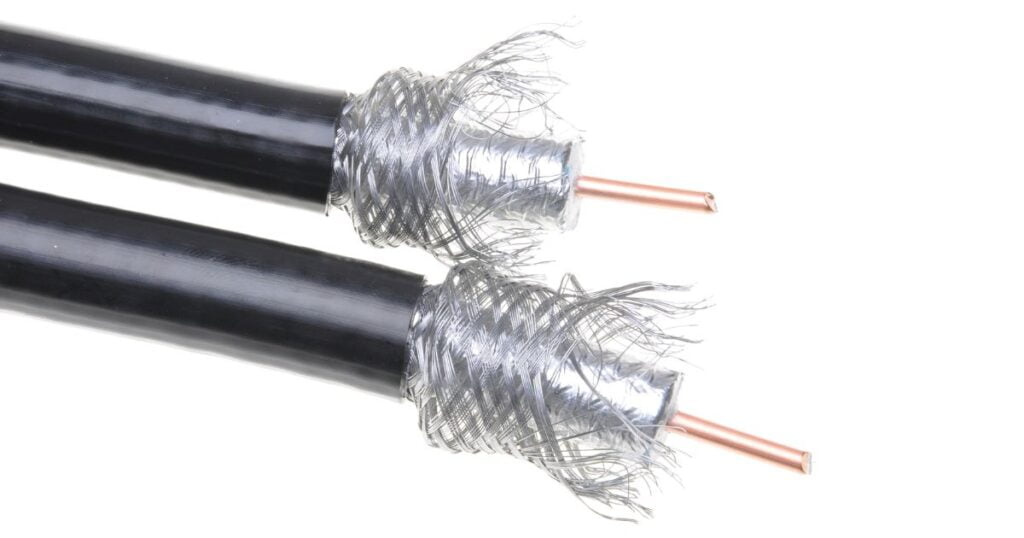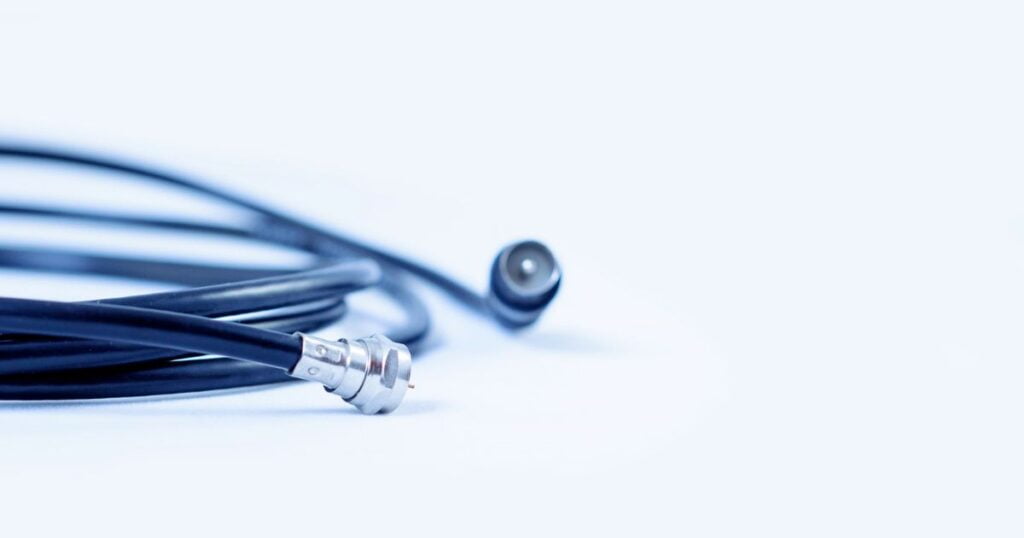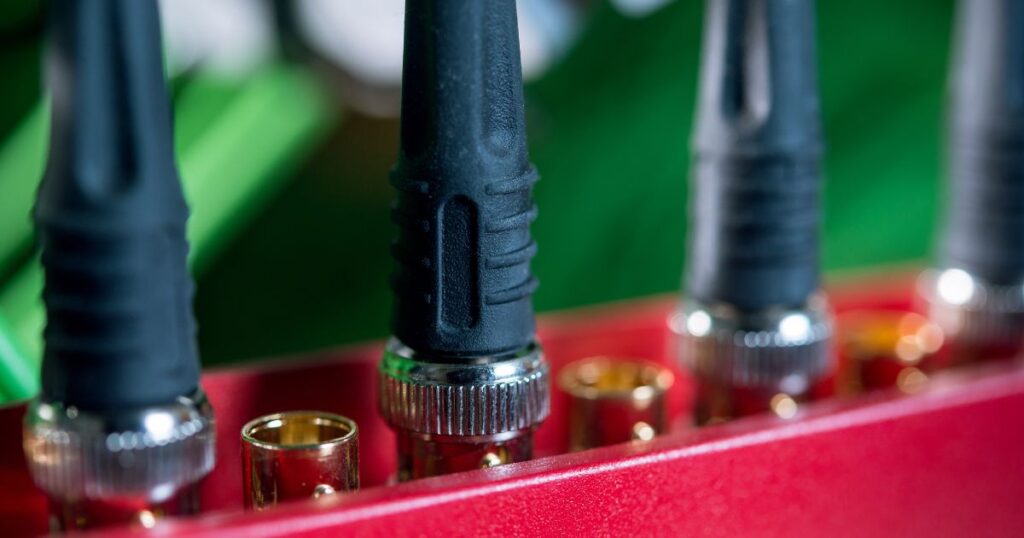Initially designed for military uses, different types of coaxial cables have found their application in the government sector and the commercial market. Thicknet vs Thinnet, both used for data transfer, are now obsolete Ethernet networking technologies, while RG6 remains popular for TV connections today. Coaxial cables have been widely used for transmitting video and audio signals and data by cable TV and internet service-providing companies. They are used for connecting antennas and satellite signal receivers with TV sets. Cable TV and internet are available in most homes using coaxial cables.
These cables are also used to connect tv with other home appliances such as DVDs. CCTV cameras used for surveillance also use coaxial cables for networking.
The key to the success of coaxial cables is their design, which offers shielding from external electromagnetic interference, EMI, and other environmental factors. Shielding of coaxial cables prevents the quality of signals from being compromised.
In This Blog
Different Types of Coaxial Cables

With diverse applications of coaxial cables, they are designed differently to meet the different requirements of a particular application. Havier shielding can significantly reduce signal leakage or EMI, but that can also increase the cost of cable. The overall thickness of the cable indicates the internal design and the application.
Several coaxial cables are often used: RG -58 (Thinnet), RG59, RG11, RG8 (Thicknet), and RG6.
What is a Radio Guide or RG number?
Gauge is the measure of the thickness of the cable and is referred to as Radio Guide measurement or RG number. A higher RG count means a thicker cable and a thinner central conductor cord. The three most commonly used coaxial cable sizes for video signal transmission are RG6, RG11, and RG59, while R6-58 and RG8 are used for data transfer in ethernet connections.
The distinction between these coaxial cables lies in the width or gauge of the copper conductor. As a rule, the gauge of the copper conductor grows, the degradation in signal quality over long distances decreases. The larger the gauge, the thinner the conductor becomes, which results in lower bandwidth capacity.
Types of Coaxial Cables for Video Signal Transmission
RG59, with an outside diameter of 6.15mm, has the thinnest central copper conductor of 0.85mm diameter and 3.85mm mesh of insulation. It is best suited for low-bandwidth applications such as CCTV analog video feeds. It is not suitable for HD television broadcasts which require significantly more bandwidth.
RG6, with an outside diameter of 6.90mm, 1.12mm central conductor, and 4.50mm insulation, is the most commonly coaxial cable used for domestic television setups.
RG11, with an outside diameter of 10.30mm, can be used for higher bandwidth applications such as HD TV connection. It is the thickest of the three, has minimum flexibility, and is difficult to bend or install.
Difference between RG6 and RG11

RG6 has a higher attenuation level when compared to RG11, while RG11 cables are more expensive and can take the signals roughly twice as far as RG6 cables without compromising the quality of signals. RG6 can transmit a signal up to 600 meters, whereas RG11 can transmit a signal up to 1,100 meters without degradation. However, 1,100 meters is an extravagance for domestic needs. RG 59 can carry the signal up to only 25 meters without a significant loss.
Ethernet-based LANs connection
Ethernet-based Local Area Networks LANs are a set of computers and devices in close physical proximity networked together with the help of cables or wires. One example could be devices in one signal building using a shared cable internet data connection.
Types of Coaxial Cable in Networking

Thicknet was the original Ethernet wiring, but Thinnet, cheaper and easier to install, was the more commonly used Ethernet wire.
While Thicknet continues to be used for backbone wiring, using coaxial cable for LAN connection is obsolete and is now replaced by unshielded twisted-pair (UTP) cabling. Thinnet is still used in electrically noisy environments like shop floors in factories (EMI) caused by motors, generators, and other heavy equipment that can disrupt communication if UTP is used. This heavy EMI and noise will not interfere with the signals in coaxial cabling, with its internal shielding to prevent disruption.
Difference Between Thinnet and Thicknet Coaxial Cable

Thicknet – Ethernet-based LANs using thick cable RG8/U cable that is 0.4 inch in diameter for internet connection are referred to as Thicknet or10Base5 systems. Here 10 means the 10Mbps speed that this cable can offer, and Base means baseband, and 5 represents the maximum distance of 500 meters recommended between nodes/repeaters.
Thinnet – Ethernet systems using thinner coaxial cable RG58/U that is 0.2 inch in diameter and has an impedance of 50 ohms are referred to as Thinnet or 10Base2. Here 2 represents the maximum distance of 200 meters recommended between nodes/repeaters. Thinnet cabling can become damaged if it is sharply bent or twisted, so handle it carefully. (It is not nearly as fragile as fiber-optic cabling, however.)








